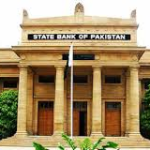 State Bank of Pakistan (SBP) has released its first and second quarterly report of Payment Systems for the Fiscal Year 2022-23, covering July to December 2022 period. The report presents major highlights of payments ecosystem in the country and comprehensive analysis of transactions processed through the payments infrastructure.
State Bank of Pakistan (SBP) has released its first and second quarterly report of Payment Systems for the Fiscal Year 2022-23, covering July to December 2022 period. The report presents major highlights of payments ecosystem in the country and comprehensive analysis of transactions processed through the payments infrastructure.
Raast – SBP’s initiative for providing instant cost efficient, has witnessed promising growth as number of Raast users increased from 15.0 million as of end Q4FY22 to 21.1 million by Q1-FY23 and 25.8 million by Q2FY23 showing a growth of 72.1% since Jun 2022. Number of transactions processed through Raast increased from 7.1 million to 21.5 million (up 202.1%) while value increased to PKR578.6 billion, from PKR98.4 billion (up 488.1%) since Q4FY22.
During the quarter Q1FY23, total e-banking transactions witnessed a growth of 4.1% in volume, while value declined by 5.0%. However, in quarter Q2FY23, e-banking showed growth in both volume (12.6%) and value (6.5%) of transactions reaching to 515 million and PKR42.5 trillion respectively. Since Q4FY22, internet and mobile phone banking users have increased by 21% (10.1 million users) and 22% (15.0 million users) respectively.
Transactions through internet and mobile phone banking channel also showed continued growth in both quarters with combined quarterly growth of both channels of 11% by volume and 11% by value in Q1FY23 while in Q2FY23, volume grew by 18% and value by 15%. Number of e-commerce transactions in both quarters declined but the value increased by 11.6% during Q1FY23 and 2.2% in Q2FY23.
Point-of-Sale (POS) deployed across the country grew by 3.8% since previous fiscal year FY22 reaching to 108,899 by the end of Q2FY23. During July to December 2022, a total of 94.8 million transactions amounting to PKR493.2 billion were processed at POS terminals.
Number of ATMs also increased to 17,547 by Q2FY23, from 17,133 in Q4FY22.
Payment cards in circulation issued by Banks/ MFBs and EMI at the quarter end of Q4FY22 was 43.0 million which increased to 46.5 million by the end of Q2FY23. Majority of the issued cards are Debit cards (73.8%) followed by Social Welfare cards (21.8%), Credit cards (4.1%) and Prepaid cards (0.2%).